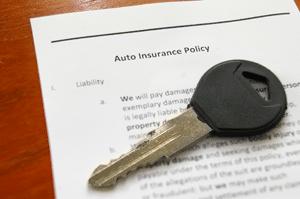for Over 25 Years
What are the Different Types of Auto Insurance Coverage in California?
There are different types of auto insurance coverage in California. California is an at fault state meaning that each party bears its own responsibility for property damage and injury caused by the negligence of themselves or others operating their motor vehicle. Every person in the Golden State is obligated to carry at least the state minimum of auto insurance coverage to comply with the financial responsibility laws of the state. From there, many people opt to and should have higher and more broad coverages to protect their financial assets in the case of an automobile accident.
What are the minimum amounts of coverage that every California driver must have?
Pursuant to California Vehicle Code 16020, all drivers and owners of vehicles in the state must maintain proof of “financial responsbility”, defined as minimal coverage or alternatives to coverage such as a self insured bond. The state minimum for individual non-commercial drivers is $15,000 per claimant and $30,000 per incident for bodily injury caused to another person and $5,000 for damage to any personal property including other vehicles. The term “bodily injury” is almost always defined to include both injury and wrongful death.

What are the provisions that every auto insurance policy in California contain?
- The limits of coverage at the minimum amount stated in CVC 16056 or above.
- A description of the vehicle or vehicles being covered;
- A provision for insuring any owned or leased vehicle covered by the policy for both the “named insured” (person named in the policy) and to any other person using the vehicle. If drivers are to be excluded from coverage, this must be specified in the policy.
What are the things usually not covered by an auto policy in California?
- Liability for injury or damage caused intentionally.
- Workers compensation claims for injuries occurred on the job or arising out of the course and scope of an employer employee relationship.
- Motor vehicles or persons specifically excluded from coverage.
What are some other types of coverage beyond the minimal liability that every person should have?
As a personal injury attorney who deals with car accident and insurance claims on a regular basis, I believe the following, additional coverages should be purchased in every auto policy:
- Bodily Injury and Property Damage Limits As High As Possible With Umbrella Coverage: Any type of significant automobile accident will cause property damage exceeding $5,000 and bodily injury exceeding $15,000 per person and $30,000 per incident simply due to the high cost of medical treatment and vehicle repair. For this reason, it is important to maintain coverage for as high an amount as possible. Oftentimes, you can raise the “deductible” (amount for which you would have to pay before the insurance coverage kicks in) as a trade off for higher coverage and or pay higher premiums but, going at the state minimum or being uninsured puts you at great risk for financial trouble. Many policies offer “umbrella” or “excess” coverage if a certain threshold of basic coverage is met. A common example would be a base policy of $250,000 with an excess coverage of $1,000,000.
- Uninsured and Underinsured Motorist Coverage: Because many Californians choose to not comply with the financial responsibility laws of the state or to go with minimal coverage, it is important to add this to the policy. Every CA insurance policy must automatically contain this coverage unless a written waiver is signed at the time of purchase. The benefits of this coverage and the process for filing claims under underinsured motorist provisions are discussed here.
- Medical Payments Coverage: This would cover your own medical treatment costs in the event of an accident and would supplement your health insurance and other coverages. Oftentimes, the carrier demands “subrogation” (or the right to be reimbursed) if you receive payment from another person’s insurance but, this would keep you from coming “out of pocket” while your claim is pending.
What are the different issues that arise regarding auto insurance coverage and why is it best to hire an attorney following an accident?
There are any number of issues that come up related to insurance coverage following a car accident. These can include the following whether a person or vehicle is or should be covered including drivers, passengers and owners; what the limits should be for both injury and property damage; what the reasonable amount to be paid for medical expenses, car repair or rental car reimbursement; whether any excess policy can and should be accessed to pay the claims; whether an uninsured or under insured motorist claim should be made if the at fault driver either had no insurance, fled the scene or had minimal coverage; whether any expenses need to be reimbursed to the carrier upon recovery from a third party; whether a commercial policy may either substitute for or supplement an individual policy if the at fault driver was in the course and scope of their employment at the time of the accident; and many other related issues.
Because these issues are complicated and it is very difficult to sort through them all and come up with a solution which maximizes the total amount from all insurance coverages to which a person may be entitled, it is always advisable to retain a personal injury attorney as soon as possible following an auto collision. This ensures that nothing is said or done that would waive off any, potential claims. Insurance carriers whether they be covering the at fault driver or the operator not at fault, are in the business of trying to minimize pay outs. It is important to have your own advocate “insuring” that you are received every benefit for which California state insurance laws and the various policies provide.
Other Resources:












